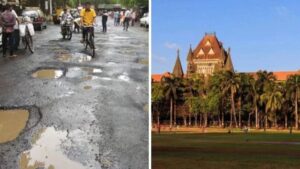Maharashtra’s HSRP Compliance Crisis: 1 Million Vehicles Still Missing Secure Plates

Maharashtra Government Mandates High-Security Registration Plates For Old Vehicles; Advises Online Payment Only Via Official Website
In Maharashtra, a significant number of vehicles have been hitting the roads without the required high-security registration plates (HSRPs). Officials report that nearly 1 million new vehicles have been registered in the state over the past five years without these mandatory plates.
The government made HSRPs mandatory for all vehicles registered before April 1, 2019, to reduce vehicle theft and ensure consistent identification. They placed the responsibility on manufacturers to install HSRPs before delivering vehicles to customers. While the government extended the deadline for fitting HSRPs to April 30 a recent internal review revealed that nearly 1 million vehicles are still operating without them.
This issue extends to older vehicles as well. The government mandated HSRPs for an estimated 21 million older vehicles registered before April 1, 2019. The review found that 10.5 million out of 11.5 million registered vehicles have been fitted with HSRPs, while 998,000 vehicles are still without them. This indicates a significant gap in compliance with the HSRP mandate, raising concerns about vehicle security and identification in the state.
The Maharashtra Transport Commissioner’s office has ordered a crackdown on vehicles registered after April 2019 that are still missing their High Security Registration Plates (HSRPs). These plates, also known as ‘IND’ or ‘INDIA’ number plates, are mandatory for all vehicles except two-wheelers and tractors.
HSRPs are made from a special aluminum alloy and feature tamper-proof elements like a retro-reflective film with the inscription ‘India,’ a chromium-based Ashok Chakra hologram, hot-stamped blue “IND” lettering, and a unique 10-digit laser-engraved serial number. They are also designed to be difficult to remove. The HSRP rule also requires a chromium-based hologram sticker to be placed on the inside of the windshield of all vehicles except two-wheelers and tractors. This sticker displays the vehicle’s registration details.
The crackdown comes after it was found that many new vehicles, including those owned by the government, are missing their HSRPs. Maharashtra has over 40 million vehicles, and after a lengthy tendering process, the transport department has chosen three companies to install HSRPs on older vehicles. The actual installation of HSRPs for older vehicles began in December 2024.
The process of fitting HSRPs to older vehicles has been met with controversy over the cost of the plates. Opposition parties have accused the Maharashtra government of charging excessive fees, but the government claims the prices are in line with other states.
Many newly registered vehicles without HSRPs are instead displaying personalized number plates with digits arranged to form words like ‘DADA’ or ‘BHAU’ in English or Devanagari script. Some number plates use very small letters and digits, except for the last four numbers, to avoid detection by traffic cameras.
Another common violation is improper HSRP installation. The plates should be secured with non-removable snap locks, but many dealers are using screws or bolts. In some cases, dealers are sending HSRP kits to customers after registration and asking them to install the plates themselves. To ensure vehicles are not delivered to customers without HSRPs, the transport department has made it mandatory for dealers to upload photos and details of HSRPs to the VAHAN portal. The vehicle’s registration certificate will not be printed at the RTO until this is done.
How did the activists and government officials react?
People who work to improve things and former government officials who used to work in transportation are upset that people aren’t following the rules about having High Security Registration Plates (HSRPs) on their cars. They think the biggest problem is that the government isn’t doing enough to make sure people follow the rules.
They are confused about how so many new cars are being driven without HSRPs, since the rules say that the companies that make cars and the places that sell cars are supposed to put them on the cars before they sell them.
One person who used to work for the government said that it’s wrong for the government to punish car owners for not having HSRPs when they should be punishing the companies that make cars and the places that sell cars.
“If hundreds of thousands of cars are being driven without HSRPs, the companies that make cars and the places that sell cars are responsible. The first thing they should have done is punish them, not the car owners, many of whom don’t even know about the HSRP rules,” they said. This shows that there’s a big problem with how the government is making sure the rules are followed and that the companies that make cars and the places that sell cars are doing what they are supposed to do, they said.
The price of getting HSRPs is included in the price of the car, and the papers that you get from the place where you buy the car say that it’s included.
A former official questioned how vehicle registration certificates (RCs) are issued for vehicles that lack High Security Registration Plates (HSRPs), as the rule states that vehicles should not be delivered without them.
Vijaykumar Duggal, director of the 3A Road Safety Foundation, raised similar concerns. He questioned how 1 million vehicles received RCs when the transport department claims it cannot be printed without uploading HSRP fitment details.
Duggal further questioned whether these vehicles ever had HSRPs or if they were replaced with unauthorized plates. He pointed out the ineffectiveness of HSRPs if they can be easily replaced, questioning the government’s control over their fitment.
A motor vehicle inspector acknowledged the lack of a specific rule for penalizing vehicles without HSRPs, highlighting the minimal fine and its impact on enforcement. However, they suggested suspending dealers’ certificates for repeated offenses of delivering vehicles without HSRPs as a potential obstacle.












